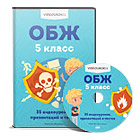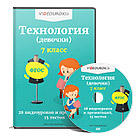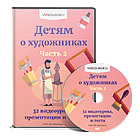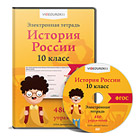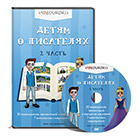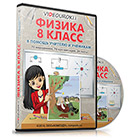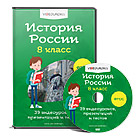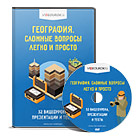Сравнение в английском, немецком и французском языках.
Автор: Ершов Денис Иванович
Цикл: роль сравнения в языке

Simile: It is one of the most used figure of speech. It involves comparison between two persons or things that have features that can be said not to be similar or comparable. Simile is usually introduced by words such as ” as, like, as and as”. For example,
“The girl talks like a part”
“The boy is as brave as a lion”.
“Her lip is as soft as a pillow”.
“My father’s love for me is as deep as the ocean”.
“Her face is as bright as the sun”.
The little boy swims like a fish
Der Vergleich (oder das Gleichnis) ist eine Sprachfigur, die zur Kategorie der Wortfiguren gehört.
Es wird durch die Ähnlichkeitsbeziehung bestimmt, dh durch den Vergleich zweier Begriffe oder Ideen in einer Aussage.
Es wird normalerweise von vergleichenden Elementen (Konnektiv) begleitet: mit, wie, als solche, als, so, als, wie es scheint usw.
Vergleiche werden häufig in informeller (umgangssprachlicher) Sprache und in künstlerischen Texten verwendet, beispielsweise in Musik, Literatur und Theater.
Vergleichsbeispiele
Um die Abbildung der Vergleichssprache besser zu verstehen, sehen Sie sich unten einige Beispiele in Literatur und Musik an:
" Es ist so, dass dein Lachen die Seele durchdringt / Wie die Harmonie eines heiligen Orchesters ." (Castro Alves)
" Meine Liebe hat mich gelehrt,
" Mein Herz fiel im Leben /
" Ich schreibe Zeilen
"Das Leben kommt in Wellen, /
" Flugzeug
Vergleich und Metapher
Comparaison et métaphore
Il est très courant d'avoir une confusion entre les images des mots: comparaison et métaphore. Bien que les deux utilisent une analogie entre les termes, ils sont différents.
Alors que dans la métaphore il y a une comparaison implicite entre deux termes, dans la comparaison cela se produit de manière explicite.
Ainsi, la métaphore n'utilise pas d'élément comparatif, comme en comparaison.
Exemples:
Notre vie a été un lit de roses. (métaphore ou comparaison implicite)
Notre vie a été comme un lit de roses. (comparaison ou comparaison explicite)
Autres images de mots
En plus de la comparaison, nous avons le mot images:
périphrase (ou antonomasie)
Poursuivez vos recherches sur le sujet:
Es kommt sehr häufig zu Verwechslungen zwischen den Bildern von Wörtern: Vergleich und Metapher. Obwohl beide eine Analogie zwischen Begriffen verwenden, sind sie unterschiedlich.
Während es in der Metapher einen impliziten Vergleich zwischen zwei Begriffen gibt, geschieht dies im Vergleich explizit.
Daher verwendet die Metapher kein Vergleichselement wie im Vergleich.
Beispiele:
Unser Leben war ein Rosenbeet. (Metapher oder impliziter Vergleich)
Unser Leben war wie ein Rosenbeet. (Vergleich oder expliziter Vergleich)
Andere Wortbilder
Neben dem Vergleich haben wir das Wort Bilder:
Periphrase (oder Antonomasie)
Setzen Sie Ihre Forschung zum Thema fort:
La comparaison (ou comparaison) est une figure de style qui appartient à la catégorie des chiffres de mots.
Il est déterminé par la relation de similitude, c'est-à-dire en comparant deux termes ou idées dans une déclaration.
Elle est généralement accompagnée d'éléments comparatifs (conjonctifs): avec, comment, en tant que tel, comme, ainsi, comme, comme, il semble, etc.
Il est très courant d'utiliser la comparaison dans un langage informel (familier) et dans des textes artistiques, par exemple dans la musique, la littérature et le théâtre.
Exemples de comparaison
Pour mieux comprendre la figure du langage de comparaison, consultez ci-dessous quelques exemples en littérature et en musique:
« C'est que ton rire pénètre dans l'âme / Comme l'harmonie d'un saint orchestre .» (Castro Alves)
" Mon amour m'a appris à être aussi simple qu'une place d'église ." (Oswald de Andrade)
" Mon cœur est tombé dans la vie / tout comme une étoile blessée / par la flèche d'un chasseur ." (Cecília Meireles)
« J'écris des lignes comme quelqu'un qui pleure / Déprimé… désenchanté… » (Manuel Bandeira)
"La vie vient par vagues, / comme une mer / dans un va-et-vient / infini ." (Musique « As a wave » de Lulu Santos)
"L' avion ressemble à un oiseau / Il ne sait pas battre des ailes / Un oiseau s'envole / Il ressemble à un papillon qui s'est enfui de chez lui ." (Musique « Dream of a flute » du Teatro Mágico)
The comparison is a rhetorical stylistic medium used in works of any literary genre. A comparison is the direct countertransference of two or more facts, objects or linguistic images, which at least have a common feature. Comparisons are usually initiated with the words as and how, and can be used in the rhetoric for illustration, as well as intensify a thought process or describe an object in more detail.
Comparison
The term “comparison” originated from the Latin word comparatio, which means a comparison. It is a derivativeof the verb comparare, which means to compare.
Etymology of Comparison
Table of Contents

Etymology of Comparison
Meanings of Comparison
Comparison in Grammar
Definition of Comparison
Types of Comparison
Common Examples of Comparison
Literary Examples of Comparison
Suggested Readings
Related posts:
The term “comparison” originated from the Latin word comparatio, which means a comparison. It is a derivativeof the verb comparare, which means to compare. The prefix “com-” means “together,” and “parare” means “to make ready.” Thus, the word “comparison” literally means “together making ready,” which suggests the act of bringing two things together to examine them side by side.
Meanings of Comparison
Comparison literally means finding similarities and differences between two or more things, ideas, or concepts. It is often used to create vivid images in the readers’minds to help them understand complex ideas
Comparison in Grammar
Comparison is a singular noun with its plural form comparisons. When using the word ‘comparison’ as a subject of a sentence, the verb following it should be singular. For example;
“The comparison between the two books is interesting. (Singular)
“The comparisons between the two books are interesting.” (Plural)
Definition of Comparison
Comparison as a literary device shows similarities and differences between two or more things, ideas, or concepts. The writers use it to make their descriptions more clear and relatable to the readers by creating a connection between familiar objects and abstract ideas.
Types of Comparison
There are several types of comparisons writers use to explore similarities and differences between two or more things, ideas, or concepts. Some of the literary devices that fall under this category are as follows.
| Types of Comparison | Definitions | Examples |
| Simile | It is a comparison between two things using “like” or “as.” Ein Vergleich ist immer eine Gegenüberstellung. | “He ran like a cheetah.” Wie er als Stilmittel in Texten eingesetzt werden kann, erfährst du in diesem Beitrag. Hier kommst du gleich zum Video! |
| Metaphor | It is a direct comparison between two things, stating that one thing is something else. One of the most commonly cited examples of a metaphor in English literature comes from the "All the world's a stage" monologue from As You Like It:
| “Life is a journey.” All the world's a stage,
And all the men and women merely players;
They have their exits and their entrances
And one man in his time plays many parts,
His Acts being seven ages. At first, the infant...
—William Shakespeare, As You Like It, 2/7[3]
|
| Analogy | A comparison between two things is similar in some ways but different in others and is used to explain complex ideas. An analogy can be the linguistic process that reduces word forms thought to break rules to more common forms that follow these rules. For example, the English verb help once had the preterite (simple past tense in English) holp and the past participle holpen. These old-fashioned forms have been discarded and replaced by helped by using the power of analogy (or by applying the more frequently used Verb-ed rule.) This is called morphological leveling. Analogies can sometimes create rule-breaking forms; one example is the American English past tense form of dive: dove, formed on analogy with words such as drive: drove. Neologisms can also be formed by analogy with existing words. A good example is software, formed by analogy with hardware; other analogous neologisms such as firmware and vapourware have followed. Another example is the humorous[18] term underwhelm, formed by analogy with overwhelm. Some people present analogy as an alternative to generative rules for explaining the productive formation of structures such as words. Others argue that they are in fact the same and that rules are analogies that have essentially become standard parts of the linguistic system, whereas clearer cases of analogy have simply not (yet) done so (e.g. Langacker 1987.445–447). This view agrees with the current views of analogy in cognitive science which are discussed above. Analogy is also a term used in the Neogrammarian school of thought as a catch-all to describe any morphological change in a language that cannot be explained merely sound change or borrowing.
| “The human brain is like a computer, processing and storing information.” |
| Personification | It means assigning human qualities to non-human objects to create a more relatable and vivid image. According to Andrew Escobedo, “literary personification marshalls inanimate things, such as passions, abstract ideas, and rivers, and makes them perform actions in the landscape of the narrative.”[27] He dates “the rise and fall of its [personification's] literary popularity” to "roughly, between the fifth and seventeenth centuries".[28] Late antique philosophical books that made heavy use of personification and were especially influential in the Middle Ages included the Psychomachia of Prudentius (early 5th century), with an elaborate plot centered around battles between the virtues and vices,[29] and The Consolation of Philosophy (c. 524) by Boethius, which takes the form of a dialogue between the author and "Lady Philosophy". Fortuna and the Wheel of Fortune were prominent and memorable in this, which helped to make the latter a favourite medieval trope.[30] Both authors were Christians, and the origins in the pagan classical religions of the standard range of personifications had been left well behind. A medieval creation was the Four Daughters of God, a shortened group of virtues consisting of: Truth, Righteousness or Justice, Mercy, and Peace. There were also the seven virtues, made up of the four classical cardinal virtues of prudence, justice, temperance and courage (or fortitude), these going back to Plato's Republic, with the three theological virtues of faith, hope and charity. The seven deadly sins were their counterparts.[31]  Two of the triumphal cars, carrying Chastity and Love, from a lavish illuminated manuscript (early 16th century) of Petrach's Triomphi Two of the triumphal cars, carrying Chastity and Love, from a lavish illuminated manuscript (early 16th century) of Petrach's Triomphi The major works of Middle English literature had many personification characters, and often formed what are called "personification allegories" where the whole work is an allegory, largely driven by personifications. These include Piers Plowman by William Langland (c. 1370–90), where most of the characters are clear personifications named as their qualities,[32] and several works by Geoffrey Chaucer, such as The House of Fame (1379–80). However, Chaucer tends to take his personifications in the direction of being more complex characters and give them different names, as when he adapts part of the French Roman de la Rose (13th century). The English mystery plays and the later morality plays have many personifications as characters, alongside their biblical figures. Frau Minne, the spirit of courtly love in German medieval literature, had equivalents in other vernaculars. In Italian literature Petrach's Triomphi, finished in 1374, is based around a procession of personifications carried on "cars", as was becoming fashionable in courtly festivities; it was illustrated by many different artists.[33] Dante has several personification characters, but prefers using real persons to represent most sins and virtues.[34] In Elizabethan literature many of the characters in Edmund Spenser's enormous epic The Faerie Queene, though given different names, are effectively personifications, especially of virtues.[35] The Pilgrim's Progress (1678) by John Bunyan was the last great personification allegory in English literature, from a strongly Protestant position (though see Thomson's Liberty below). A work like Shelley's The Triumph of Life, unfinished at his death in 1822, which to many earlier writers would have called for personifications to be included, avoids them, as does most Romantic literature,[36] apart from that of William Blake.[37] Leading critics had begun to complain about personification in the 18th century, and such "complaints only grow louder in the nineteenth century".[38] According to Andrew Escobedo, there is now "an unstated scholarly consensus" that "personification is a kind of frozen or hollow version of literal characters", which "depletes the fiction".[39]
| “The wind whispered secrets to the trees.” |
| Allegory | It means to explain an abstract idea or concept through a story, with characters and events representing real-life situations. As a literary device or artistic form, an allegory is a narrative or visual representation in which a character, place, or event can be interpreted to represent a hidden meaning with moral or political significance. Authors have used allegory throughout history in all forms of art to illustrate or convey complex ideas and concepts in ways that are comprehensible or striking to its viewers, readers, or listeners. | Animal Farm by George Orwell is an allegory for the Russian Revolution and Stalinism. |
Common Examples of Comparison
Comparison is not only a literary device, but it is also commonly used in everyday language and communication to express similarities and differences between two or more things. Here are some examples of common non-literary comparisons:
Comparing prices of different products.
Comparing the nutritional values of different types of food.
Comparing the pros and cons of different options.
Сравнение (simile) - средство уподобления одного объекта другому по какому-либо признаку с целью установления сходства или различия между ними.
The boy seems to be as clever as his mother. Мальчик, кажется, так же умён, как и его мать.
Comparing the attributes of different jobs.
Comparing the performance of different sports teams.
Comparing the similarities and differences between two historical events or figures.
Putting it briefly, comparison is a ubiquitous aspect of communication and decision-making in everyday life. It helps us to make informed choices and understand the world around us better. However, in literature, it is a specific literary device as shown through examples below taken from different literary works below.
Literary Examples of Comparison
Here are a few examples of comparison as a literary device in various works of literature, along with an explanation and reference to the context:
“She walks in beauty like the night”
– Lord Byron’s “She Walks in Beauty”
Was ist ein Vergleich?
Vergleichst du zwei Gegenstände oder auch Personen miteinander, überprüfst du, welche Ähnlichkeiten oder Unterschiede sie haben.
Vergleich – Beispiel: Steffi ist deutlich schneller als Anna.
Gegenüberstellungen findest du nicht nur in solchen alltäglichen Aussagen, sondern auch in literarischen Texten. Autoren setzen Vergleiche nämlich als Stilmittel ein, um eine bestimmte Wirkung zu erzielen.
Vergleich Definition
Ein Vergleich bezeichnet die Gegenüberstellung von mindestens zwei Gegenständen oder sprachlichen Bildern. So können ihre Ähnlichkeiten oder Unterschiede betont werden. Meistens sind Vergleiche nach folgendem Schema aufgebaut: A ist wie/als B.
Explanation: This line from Lord Byron’s poem compares the woman’s beauty to the night. The poet uses a simile to describe how the woman’s grace and elegance resemble the serene and captivating qualities of the night. By contrasting the light and darkness, Byron emphasizes the woman’s attractiveness and creates a vivid image in the reader’s mind.
“All the world’s a stage, and all the men and women merely players”
– William Shakespeare’s “As You Like It”
Vergleich – Beispiele
Du findest das sprachliche Mittel in den verschiedensten Bereichen wieder. Außerdem unterscheidest du zwei verschiedene Formen des Vergleichs. Mit den folgenden Beispielen verstehst du, wie du Gegenüberstellungen erkennen und einordnen kannst.
Vergleich im Alltag
Beide Formen des Stilmittels kommen im Alltag vor. Du unterscheidest wie folgt:
Zwei Vergleichsobjekte aus demselben Umfeld werden gegenübergestellt.
„Hasen können so schnell rennen wie Hunde.
Zwei Vergleichsobjekte aus unterschiedlichen Bereichen werden gegenübergestellt.
„Du hast ja ein Gedächtnis wie ein Elefant.”
Bei dem ersten Beispiel stammen beide Vergleichsobjekte aus der Tierwelt. Du vergleichst sie aufgrund ihrer ähnlichen Eigenschaft (schnelles Rennen) miteinander. Das zweite Beispiel vergleicht hingegen eine Person mit einem Tier. Eine Eigenschaft des Tieres (ausgeprägtes Gedächtnis) wird also auf einen Menschen übertragen. Solche Ausdrücke, die überhaupt erst angeben, was verglichen wird, nennst du tertium comparationis. Übersetzt bedeutet dies „das Dritte des Vergleichs“.
Explanation: In this famous metaphor from Shakespeare’s play, the world is compared to a stage and people to actors. The metaphor suggests that life is like a theatrical performance, with individuals assuming different roles and playing their parts. It implies that people are merely transient beings, performing their roles before eventually exiting the stage of life.
“Hope is the thing with feathers that perches in the soul”
– Emily Dickinson’s “Hope is the Thing with Feathers”
Explanation: In this metaphorical comparison, Emily Dickinson likens hope to a bird with feathers that resides within the soul. By using this imagery, Dickinson conveys the delicate and ethereal nature of hope. The bird metaphor emphasizes the notion that hope brings comfort, uplifts the spirit, and is capable of soaring even in the face of adversity.
“My love is like a red, red rose”
– Robert Burns’ “A Red, Red Rose”
Tipp
Nicht bei jedem Vergleich brauchst du ein tertium comparationis. Manchmal muss sich der Leser auch selbst erschließen, anhand welcher Eigenschaft die beiden Objekte miteinander verglichen werden. So beispielsweise bei dem Satz: „Wie eine Schnecke folgte er mir.“ Hier nennt der Sprecher das Dritte des Vergleichs nicht ausdrücklich. Dennoch kommst du schnell darauf, dass er hier auf die Langsamkeit der Schnecke anspielt. Die langsame Fortbewegung ist hier also das tertium comparationis.
Zusätzlich erkennst du Vergleiche auch noch an den Signalwörtern „wie“ und „als”. Das Adverb „wie“ verwendest du immer bei Gegenüberstellungen, die auf einer Gemeinsamkeit beruhen. „Als“ begegnet dir immer bei Vergleichen, die Unterschiede ausdrücken:
Vergleich – Beispiel: „Wasser ist viel gesünder als Limo.“
Vergleich in der Literatur
Auch in literarischen Texten findest du vergleichende Textpassagen. Im Prinzip funktionieren sie auf dieselbe Art und Weise wie die Gegenüberstellungen im Alltag.
Vergleich – Beispiele:
„Und die Heere tobten, wie die kochende See.“ ( – F. Hölderlin: Die Völker schwiegen)
„So kämpfen weiter, wie Boote gegen den Strom, und unablässig treibt es uns zurück in die Vergangenheit.“ ( – F. Scott Fitzgerald: Der Große Gatsby)
„Draußen lag der Garten. Baumwipfel schwammen wie Rücken dunkler Tiere still im Licht.“ ( – L. Rinser: Ein Bündel weißer Narzissen)
„Vor uns lag die gewaltige, wellenförmige Silhouette der Bitterroot Mountains: alte querköpfige Bergriesen – wie eine Versammlung von grantigen, zigarrepaffenden Onkeln, die bei endlosen Pokerpartien hanebüchene Geschichten […] erzählten.“ ( – R. Larsen: Die Karte meiner Träume)
„Es war das erste Lächeln, weil es das erste war, das mich so direkt traf – wie eine dünne Nadel, die man nicht sieht.“ (- C. Birch: Der Atem der Welt)
Wie du an den oberen Beispielen erkennen kannst, findest du in der Literatur vor allem die zweite Form des Vergleichs. Also die Gegenüberstellung zweier Objekte aus unterschiedlichen Bereichen.
Das hat einen ganz einfachen Grund: Autoren setzen das Stilmittel vor allem dafür ein, ihre Texte anschaulicher zu gestalten. Und wie gelingt das am besten? Indem sie einen zweiten, anderen Bereich für die Beschreibung aufgreifen. Schließlich lässt sich Gleiches mit Gleichem nicht so gut erklären.
Explanation: This simile from Robert Burns’ poem compares the poet’s love to a red rose. By using this comparison, Burns conveys the beauty, freshness, and intensity of his affection. The vivid imagery of a blooming rose evokes a sense of passion, fragility, and emotional depth, capturing the essence of the poet’s love for his beloved.
These examples illustrate how comparison proves effective in literature to create vivid imagery and convey complex emotions and ideas.
Литература и источники
Brooks, Cleanth. The Well Wrought Urn: Studies in the Structure of Poetry. Harcourt, Brace & World, 1947.
Eliot, T.S. The Sacred Wood: Essays on Poetry and Criticism. Methuen, 1920.
Hirsch, E.D. Jr. Valid Interpretation: Perspectives on Meaning in the Arts. Yale University Press, 1967.
Miller, J. Hillis. On Literature. Routledge, 2002.
Poe, Edgar Allan. “The Philosophy of Composition.” Graham’s Magazine, vol. 28, no. 4, 1846, pp. 163-167.
Shklovsky, Viktor. “Art as Technique.” Russian Formalist Criticism: Four Essays, translated by Lee T. Lemon and Marion J. Reis, University of Nebraska Press, 1965, pp. 3-24.
Wimsatt, W.K., and Monroe C. Beardsley. The Verbal Icon: Studies in the Meaning of Poetry. University Press of Kentucky, 2011.
Wood, James. How Fiction Works. Farrar, Straus and Giroux, 2008.
Рыжкова-Гришина Л.В., Гришина Е.Н. Художественные средства. Изобразительно-выразительные средства языка и стилистические фигуры речи: Словарь. [Электронный ресурс]. – Москва: ФЛИНТА, 2015. – 337 с.
Статьи
Тропы и фигуры речи // Большая российская энциклопедия. Том 32. — М., 2016. — С. 433.
Фигура, в поэтике и риторике // Энциклопедический словарь Брокгауза и Ефрона : в 86 т. (82 т. и 4 доп.). — СПб., 1890—1907.
Петровский М. Фигура // Литературная энциклопедия: Словарь литературных терминов: в 2 т. М.; Л.: Изд-во Л. Д. Френкель, 1925. Т. 2. П—Я. Стб. 1025—1028.
Гаспаров М. Л. Фигуры стилистические // Литературный энциклопедический словарь. М., 1987.
Скребнев Ю. М. Фигуры речи // Русский язык. Энциклопедия / Под ред. Ю. Н. Караулова. — 2-е изд. — М.: Большая российская энциклопедия, 1997. — С. 590—592. — ISBN 5-7107-1455-0.
Панов М. И. Под ред. Т. А. Ладыженской и А. К. Михальской. Фигуры // Педагогическое речеведение. Словарь-справочник. — М.: Флинта, Наука. — 1998. // Педагогическое речеведение: Словарь-справочник / под ред. Т. А. Ладыженской, А. К. Михальской. М.: Флинта; Наука, 1998.
Топоров В. Н. Фигуры речи // Лингвистический энциклопедический словарь / гл. ред. В. Н. Ярцева. М.: Советская энциклопедия, 1990.
Фигуры // Литературная энциклопедия терминов и понятий / Под ред. А. Н. Николюкина. — Институт научной информации по общественным наукам РАН: Интелвак, 2001. — Стб. 1140. — 1596 с. — ISBN 5-93264-026-X.
Прочая литература
Гаспаров М. Л. Античная риторика как система // Гаспаров М. Л. Избранные труды. Т. I. О поэтах. М.: Языки славянских культур, 1997.
Горнфельд А. Г. Фигура в поэтике и риторике // Вопросы теории и психологии творчества. Т. I. 2-е изд. Харьков, 1911.
Горте М. А. Фигуры речи. Терминологический словарь. — М.: ЭНАС, 2007. — 208 с. — 3000 экз. — ISBN 978-5-93196-682-3.
Москвин В. П. Язык поэзии: Приёмы и стили. Терминологический словарь. М., 2017.
Общая риторика / пер. с фр. Е. Э. Разлоговой, Б. П. Нарумова; ред. и вступ. ст. А. К. Авеличева. М.: Прогресс, 1986.
Харциев В.. Элементарные формы поэзии // Вопросы теории и психологии творчества. Т. I. 2-е изд. Харьков, 1911.
Хазагеров Г. Г. Риторические фигуры: три аспекта «отклонения от обычного выражения» и перспективы изучения теории фигур
Todorov Tz. Tropes et figures // To honor R. Jakobson… T. 3. The Hague; Paris, 1967.
9




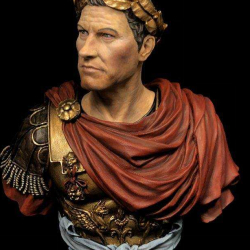




 Two of the triumphal cars, carrying Chastity and Love, from a lavish illuminated manuscript (early 16th century) of Petrach's Triomphi
Two of the triumphal cars, carrying Chastity and Love, from a lavish illuminated manuscript (early 16th century) of Petrach's Triomphi